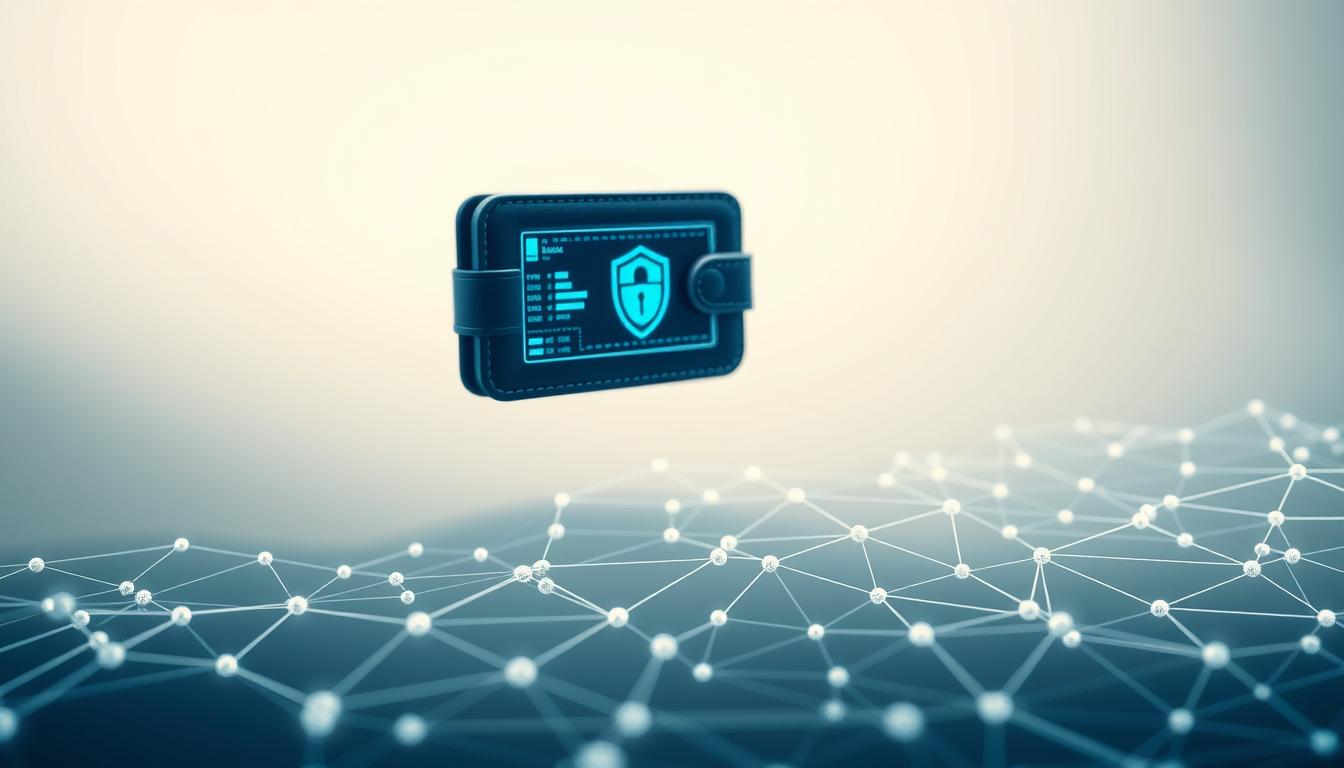Now Reading: Blockchain Immutability Data Integrity Security: Ensuring Trust
- 01
Blockchain Immutability Data Integrity Security: Ensuring Trust
Blockchain Immutability Data Integrity Security: Ensuring Trust

In our connected world, businesses manage huge amounts of sensitive details. Industries like finance, healthcare, and logistics rely on keeping this information safe and accurate. The need for reliable systems has never been greater.
Traditional databases have a central point of control. This makes them a target for hackers and creates a single point of failure. Unauthorized changes can go unnoticed, harming the reliability of the stored records.
A new type of technology offers a powerful solution. This system uses a decentralized network of computers. It creates a shared ledger that is extremely difficult to alter.
This guide will show you how this innovative approach works. We will explore its core features that provide a strong foundation for trust. You will learn practical steps for using it to protect your organization’s most important data.
Key Takeaways
- Modern organizations handle vast amounts of critical information that requires strong protection.
- Centralized databases are vulnerable to hacking, unauthorized access, and system failures.
- Decentralized ledger technology provides a robust alternative to traditional systems.
- The core strength of this system lies in its resistance to tampering and unauthorized changes.
- This guide will provide a clear understanding of the technology and its practical applications.
- Adoption is growing rapidly as industries seek more secure ways to manage digital transactions.
Overview of Blockchain Immutability Data Integrity Security
The foundation of reliable digital operations rests on maintaining unchangeable records. This technology creates a permanent history that builds confidence across business networks.
Defining Blockchain Immutability and Data Integrity
Once information enters this system, it becomes like a permanent tattoo. The records cannot be erased or modified after validation.
Each piece of information receives a unique digital fingerprint called a hash. If anyone tries to change the original content, the fingerprint becomes completely different. This immediately shows that tampering occurred.
Key Benefits: Security and Trust in a Decentralized Ledger
This approach spreads information across many computers instead of one central server. This eliminates single points of failure that hackers often target.
The decentralized nature creates a members-only network where participants control access. Confidential details remain visible only to authorized users.
Industry forecasts show remarkable growth for this solution. The market is expected to expand by nearly $1 trillion by 2032. This demonstrates widespread confidence in its capabilities.
Businesses gain end-to-end visibility and permanent audit trails. The system establishes trust without traditional middlemen like banks or third-party validators.
How Blockchain Technology Establishes Trust and Transparency
Establishing digital trust requires moving beyond centralized control points. This system creates confidence through shared verification across participant networks.
The architecture spreads information across many computers instead of one location. This approach prevents any single entity from controlling the entire system.
Decentralized Ledger and Consensus Mechanisms
Participants agree on transaction validity through consensus mechanisms. These protocols ensure everyone follows the same rules before recording occurs.
Proof of Work uses mathematical puzzles that miners solve to validate transactions. The first successful miner adds the new block to the chain.
Proof of Stake selects validators based on their invested coins. This method requires less energy while maintaining network honesty.

Role of Cryptographic Hashing in Securing Transactions
Each block receives a unique digital fingerprint called a hash. This fingerprint changes completely if anyone alters the original content.
Blocks connect in a sequence where each contains the previous block’s hash. Changing one block would require recalculating all subsequent blocks.
This cryptographic linking creates a permanent record that remains secure. The distributed ledger provides transparent access to authorized participants.
Applying Blockchain Solutions in Industry Sectors
Modern enterprises are adopting distributed ledger systems to revolutionize their core business processes. These technologies provide practical benefits across multiple industries.
Real-World Use Cases: Supply Chain Management and Healthcare
In supply chain management, this technology offers complete visibility from origin to destination. Retail giant Home Depot uses IBM’s solution to resolve vendor disputes efficiently.
The system creates permanent audit trails that track every movement. This prevents fraud and ensures product authenticity throughout the entire journey.

Healthcare represents another critical application area. Medical facilities use these systems to protect patient information while enabling secure data sharing. Blockchain-based healthcare systems allow authorized providers to access complete medical histories.
| Industry | Primary Benefit | Key Application | Real-World Example |
|---|---|---|---|
| Supply Chain | End-to-End Traceability | Product Authentication | Home Depot Vendor Management |
| Healthcare | Secure Data Exchange | Patient Record Sharing | Medical Provider Networks |
| Finance | Fraud Prevention | Transaction Verification | Corporate Bond Transfers |
| Sustainability | Provenance Tracking | Ethical Sourcing Verification | Environmental Compliance |
Enhancing Transparency Through Immutable Records
These systems create permanent records that cannot be altered after validation. This transparency builds trust among all participants in a network.
Businesses gain real-time visibility into their operations. They can quickly identify inefficiencies like delays or quality issues. The technology drives greater accountability across entire ecosystems.
Smart contracts automate processes by executing predefined terms automatically. This reduces manual intervention and speeds up transactions significantly.
Practical Steps for Integrating Blockchain Technology
The transition to decentralized record-keeping demands systematic preparation and phased deployment. Organizations must develop comprehensive strategies before implementing any distributed system.
Best Practices for Deployment and System Setup
Begin with a thorough security framework that incorporates identity management controls. Ensure only authorized users can access critical network components.
Strong encryption protects information stored across multiple nodes. Choose the right architecture for your specific needs.

Private networks offer controlled access with single organization management. Consortium models allow multiple preselected entities to share responsibilities.
Leveraging Consensus Algorithms for Reliable Data Security
Select appropriate consensus mechanisms that validate operations while maintaining network honesty. Proof of Work provides maximum decentralization but requires significant computational resources.
Proof of Stake offers energy efficiency while ensuring transaction validation. Regular smart contract audits prevent vulnerabilities that could compromise the entire system.
Continuous monitoring and incident response plans detect threats promptly. This approach minimizes potential impacts across the distributed ledger.
Conclusion
Forward-thinking companies are now adopting revolutionary approaches to safeguard their operational records. This transformative technology addresses critical concerns about unauthorized access that plague traditional systems across multiple industries.
The decentralized architecture achieves unparalleled reliability through cryptographic hashing and consensus mechanisms. These create tamper-proof records distributed across network nodes in the distributed ledger architecture.
Organizations gain comprehensive benefits including enhanced transparency through permanent audit trails. The system builds trust without intermediaries while streamlining management processes.
Practical applications demonstrate real value in supply chain tracking and healthcare information protection. As the technology evolves with AI integration, market growth projections signal widespread adoption.
Businesses should embrace this practical solution for building stakeholder confidence and securing sensitive information. Decentralization offers superior protection in our interconnected digital landscape.
FAQ
What does ‘immutability’ mean in the context of a distributed ledger?
Immutability refers to the characteristic that once information is added to the ledger, it becomes extremely difficult to alter or delete. This is achieved through cryptographic hashing and consensus mechanisms, creating a permanent and tamper-evident history of all entries.
How does this technology improve transparency in supply chain management?
By providing a single, shared source of truth, this system allows all participants in a supply chain to track a product’s journey from origin to consumer. Every transfer or update is recorded as a transaction, offering unparalleled visibility and reducing opportunities for fraud or error.
Can records in a decentralized network ever be changed?
While it is technically possible to alter records, doing so would require an immense amount of computational power to override the network’s consensus. This makes any unauthorized change practically impossible, ensuring the information remains secure and trustworthy for all users.
What industries benefit most from secure, transparent record-keeping?
Sectors like healthcare, for managing patient records, and finance, for tracking ownership of assets, see significant advantages. Logistics and manufacturing also benefit by using it to verify the authenticity and provenance of goods throughout their lifecycle.
What are the primary risks associated with implementing this solution?
Key challenges include the initial setup complexity, integration with existing systems, and ensuring proper access control. While the ledger itself is highly secure, the applications built on top of it must be designed carefully to prevent vulnerabilities.















